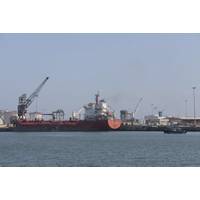As Chinese demand slows, mining consolidation will accelerate.
The mining industry is expected to consolidate due to the decline in industrial metals demand, especially in China, the top consumer. Investors said that for now, the high costs of mergers and acquisitions among diverse miners and the significant chance of rejection could hinder full-scale activity. This is ahead of the global gathering of the Copper Industry for the CESCO in Santiago, Chile, next week. LSEG data shows that M&A activity in the mining sector dropped 27% in terms of value to $15 billion during the first quarter compared with the same period in 2024. BHP shares are down 26% since the beginning of 2024.
As Chinese demand slows, mining consolidation will accelerate.
The mining industry is expected to consolidate due to the decline in industrial metals demand, especially in China, the top consumer. Investors say that for the moment, mergers and acquisitions among diversified miners may be hindered by prohibitively high costs and a significant chance of rejection. LSEG data shows that M&A activity in the mining sector dropped 27% in terms of value to $15 billion during the first quarter compared with the same period in 2024. BHP shares are down 26% since the beginning of 2024. Rio Tinto shares are down 23%, while Glencore shares have fallen 42%.
Andy Home: Export ban on cobalt from Congo is not enough to eliminate the glut
The Democratic Republic of Congo has suspended cobalt exports for four months, a sign of how even the largest producer in the world is feeling the effects of historically low prices. This news has given cobalt a boost and its impact is already spreading through the supply chain. One Congolese operator Eurasian Resources Group, (ERG), declared force majeure for deliveries of the metal used in electric vehicle batteries. Will it be sufficient to solve the structural problems that a market oversupplied? History does not support this. The Congolese Government appears to have understood that a temporary export ban is not enough and that something more dramatic may be required.
Corning and US solar manufacturers join forces to produce American-made panels

The companies announced on Thursday that Corning, a technology company, has signed a deal to produce the first solar panel made entirely of American components. The alliance between Georgia's Suniva and Corning, a panel manufacturer, is an important milestone in efforts to create a U.S. manufacturing sector for solar that can compete with China. Heliene, based in Canada, produces panels in Minnesota. Corning, through its subsidiary Hemlock Semiconductor, produces silicon wafers, polysilicon and other raw materials for the solar industry in Michigan.
Trump orders new tariff probe into US copper imports

The President Donald Trump launched a new front in his attack on global trade norms on Tuesday, ordering an investigation into possible new tariffs on imports of copper to rebuild U.S. manufacturing of a critical metal for electric vehicles, military equipment, the power grid, and consumer goods. In an effort to stop what his advisors viewed as China's move to dominate the copper market in the world, Trump signed at the White House an order directing Commerce Secretary Howard Lutnick, to launch a national-security probe under Section 223 of the 1962 Trade Expansion Act.
After two years of losses, VEGOILS Palm ends the year with a gain of more than 19%
The market closed lower on Tuesday due to lack of new buying at year's end. The benchmark contract for palm oil delivery in March on Bursa Malaysia's Derivatives exchange fell by 107 ringgit or 2.35% to $4444 ringgit (US$994.63) a metric ton. Anilkumar bagani, the research head of Sunvin Group in Mumbai, said that futures prices were lower due to a lack of new buying from destination markets. Dalian's palm oil contract, which is the most active contract in Dalian, lost 1.1% and gained 0.16%. The Chicago Board of Trade soyoil price fell 0.45%. As palm oil competes to gain a share in the global vegetable oil market, it tracks the price changes of competing edible oils.
Palmetto to gain nearly 21% after two years of losses
The market was lower on Tuesday due to lack of new buying at year's end. By midday, the benchmark contract for palm oil delivery in March on the Bursa Derivatives exchange fell 53 ringgit or 1.16% to 4,498 Ringgit ($1,007.17) per metric ton. Anilkumar bagani, the research head of Sunvin Group in Mumbai, said that futures prices were lower due to a lack of new buying from destinations markets. Dalian's palm oil contract, which is the most active contract in Dalian, lost 1.32% and gained 0.05%. Chicago Board of Trade soyoil prices fell by 0.05%. As palm oil competes to gain a share in the global vegetable oils industry, it tracks the price changes of competing edible oils.
EnFAIT Tidal Project Claims Success
Enabling Future Arrays in Tidal (EnFAIT), the flagship EU tidal energy project, has reduced the cost of tidal energy by 15 per cent and grown its supply chain from four to 14 EU countries, just 18 months after its launch.EnFAIT is an academic-industry collaboration between nine European partners focused on demonstrating the economic viability of tidal power. The project is also paving the way for a new industrial marine manufacturing sector with a supply chain based across Europe.Consortium lead, Edinburgh-based Nova Innovation Ltd, reports that…
India's Oil Imports Reach Record High in January

India imported a record 4.93 million barrels of oil per day (bpd) in January to feed its expanded refining capacity and meet rising demand, ship tracking data obtained from sources and data compiled by Thomson Reuters Oil Research & Forecasts showed. The world's third-biggest oil importer shipped in 13.6 percent more oil in January than a year earlier and about 12.5 percent more than the previous month, the data showed. Imports in January were high as state-run refiners, which operate two-third of India's nearly 5 million bpd capacity, usually boost runs in the March quarter to meet government-set targets.
Indian Oil to Boost Panipat Refinery Capacity
Indian Oil Corp Ltd plans to increase the capacity of its Panipat refinery by two thirds to 500,000 barrels per day (bpd) at a cost of 231.16 billion rupees rupees ($3.64 billion), the country's largest refiner said on Wednesday. India is increasing refining capacity to keep pace with the expected growth in fuel demand as Prime Minister Narendra Modi seeks to boost the manufacturing sector. The energy-hungry nation's refinery capacity has more-than-doubled since the start of the millennium to about 5 million bpd. "Another step towards meeting our rapidly growing energy demand…
India's Oil Imports Hit Record High in September

India imported a record 4.83 million barrels per day (bpd) of oil in September as several refiners resumed operations after extensive maintenance to meet rising local fuel demand. The world's third-biggest oil importer shipped in 10 percent more oil last month than a year earlier and about 19 percent more than in the previous month, ship-tracking data from industry sources and Thomson Reuters Analytics showed. "There was heavy maintenance at some refineries in July-August. All those refineries have come online, so naturally refiners will have to boost purchases to meet local demand," said Senthil Kumaran, senior analyst at energy consultant FGE.
Industry Group Boosts Canadian Oil Well Drilling Forecast

The Petroleum Services Association of Canada upped its 2017 oil and gas well drilling forecast by 23 percent on Monday as global oil prices recover from a two-year rout. The industry body now estimates 5,150 wells will be drilled across Canada this year, up from its previous 2017 forecast, made in November, of 4,175 wells. Canada's oilfield service sector was hard hit by the collapse in global oil prices since mid-2014 as producers cancelled exploration and drilling plans and slashed capital investment. But with U.S. crude holding above $50 a barrel, roughly double the 13-year low it hit in February last year, the sector is seeing an increase in demand.
Canada's Q3 Capacity Utilization sees Record Increase
Canada's industrial capacity saw its biggest gain on record in the third quarter as oil and gas production resumed following wildfires in northern Alberta, data from Statistics Canada showed on Thursday. Capacity utilization rose to 81.9 percent from a revised 79.7 percent in the second quarter. The rise was the largest quarterly increase since the agency began tracking industrial capacity in 1987. Oil and gas extraction was the main contributor, with capacity in the sector rising to 82.3 percent. Wildfires in the Fort McMurray area in May, as well as scheduled maintenance outages, had disrupted operations in the second quarter.
Coal Price Hopes Fade as Asia Demand Slows
Coal's bright start to the year in Asia is fading amid the gloom of weak demand across the region's top importers and still too much supply from top producers. The benchmark Newcastle weekly coal index ended at $51.13 a tonne on April 1, down from its high so far this year of $52.59, reached on March 11. That peak capped a rally of 11 percent from the almost 10-year low of $47.37 a tonne plumbed in the week to Jan. 21, but it now appears it was nothing more than a false dawn. Coal was most likely the beneficiary of better sentiment towards commodities in general that saw strong rallies in iron ore and crude oil in recent weeks, which have also petered out.
Australia - A Gas Giant Abroad but Fragile at Home
A new Government report on the Australian gas market highlights the need for Government policy action to provide a ‘level playing field’ for gas. Gas Market Report 2015 released today by the Chief Economist of the Department of Industry Innovation and Science predicts significant international opportunities for Australian gas, but a domestic gas market which is vulnerable. Energy Networks Association CEO, John Bradley, said the rapid transformation in the gas market made it essential that Australia’s domestic gas customers were protected by good energy and carbon policy.
Oil Down on China Data, Uncertain OPEC Action
China posts weakest manufacturing data since 2012; net long positions in Brent rise most in four years - ICE. Oil fell nearly four percent on Monday as weak economic data from China, the world's largest energy consumer, weighed on prices and an OPEC source played down talk of an emergency meeting to stem the decline. China's manufacturing sector contracted at the fastest pace since 2012 in January, adding to worries about demand from the world's second-biggest economy at a time when the market is already weighed down by a large supply overhang.
Lower Oil Prices Squeezing U.S. Manufacturing Sector
New orders for long-lasting U.S. manufactured goods in December recorded their biggest drop in 16 months as lower oil prices and a strong dollar pressured factories, the latest indication that economic growth braked sharply at the end of 2015. Despite the slowdown in growth, which was acknowledged by the Federal Reserve on Wednesday, the labor market remains on solid ground. First-time filings for jobless benefits retreated from a six-month high last week, other data showed on Thursday. Economists have expressed worries that the energy sector slump and drag from a strong dollar are spilling over to other parts of the economy…
California Drivers Send Warning to OPEC: Kemp
California's road traffic in 2014/2015 grew at the fastest two-year rate since 2001/2002, according to the state's Department of Transportation. OPEC is relying on continued strong growth in driving and fuel demand from the United States and other countries to help rebalance the oil market in 2016 and 2017. But continued strong growth in fuel demand is by no means assured, as the U.S. industrial economy struggles, global trade remains sluggish and economic growth in emerging markets slows. California traffic volumes increased more than 2.6 percent in both 2014 and 2015…
Oil Off to a Turbulent Start in 2016 -DW
Oil prices have been extremely volatile since the first trading day of 2016 and hit 12-year lows last week with Brent dropping below $33 a barrel for the first time since 2005. The fall in the Chinese manufacturing index, the Saudi-Iran standoff and North Korean nuclear test have all had a significant impact on shaping oil price trends, says market analyst and consultant Douglas-Westwood (DW). Brent crude rose to a three-week high of $38.91 a barrel on January 4 as a consequence of the Saudi-Iran geopolitical risk but these gains were quickly diminished due to concerns over economic slowdown.
Commodity Slump Puts Emerging Markets at Risk
Oil, gas and mining accounted for nearly nine percent of all new greenfield foreign direct investment (FDI) projects announced over the last decade. Oil, gas and mining FDI has played a large role fuelling growth over the last decade, especially in developing countries. The current and prospective slowdown in investment is likely contributing to sluggish performance in 2015 and 2016. Between 2005 and 2014, the petroleum and mining industries announced new FDI projects totalling almost $745 billion, according to the United Nations Conference on Trade and Development (UNCTAD).
